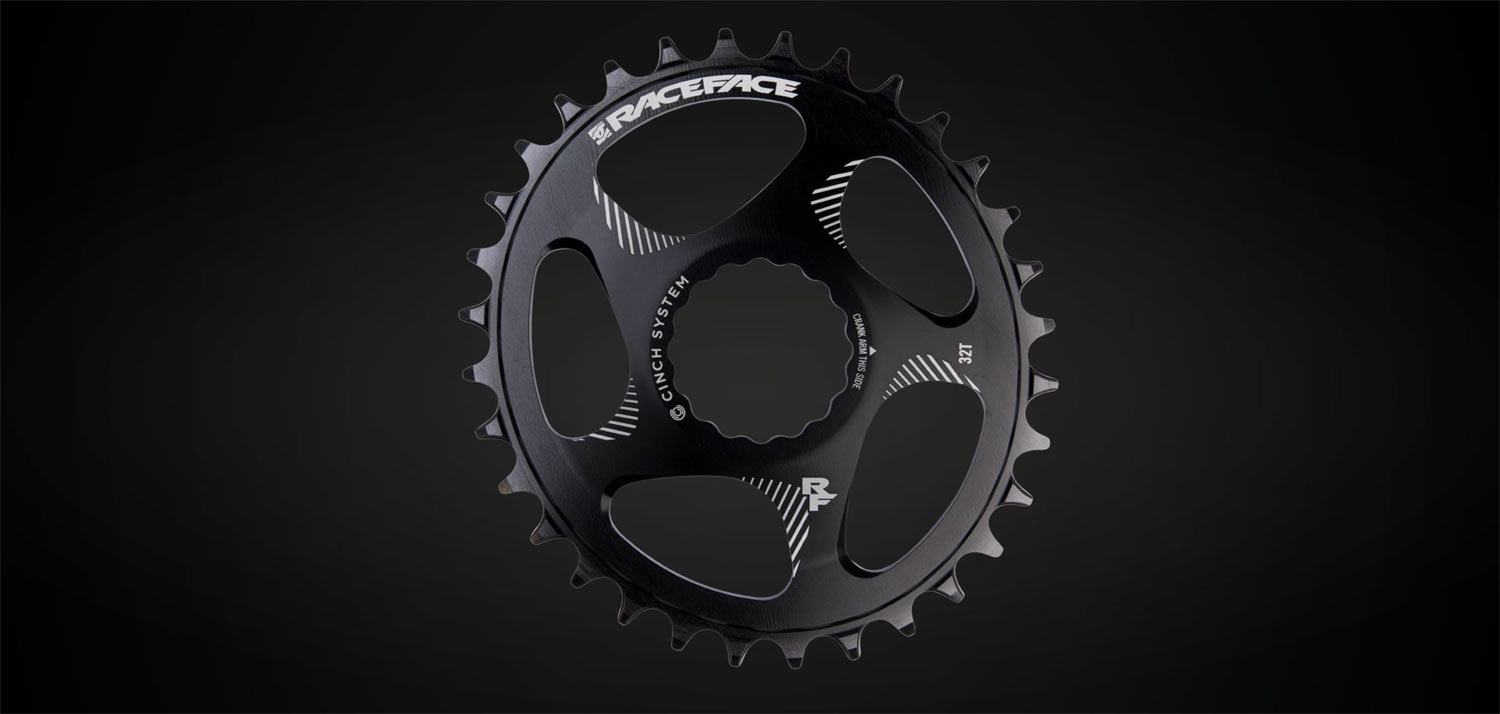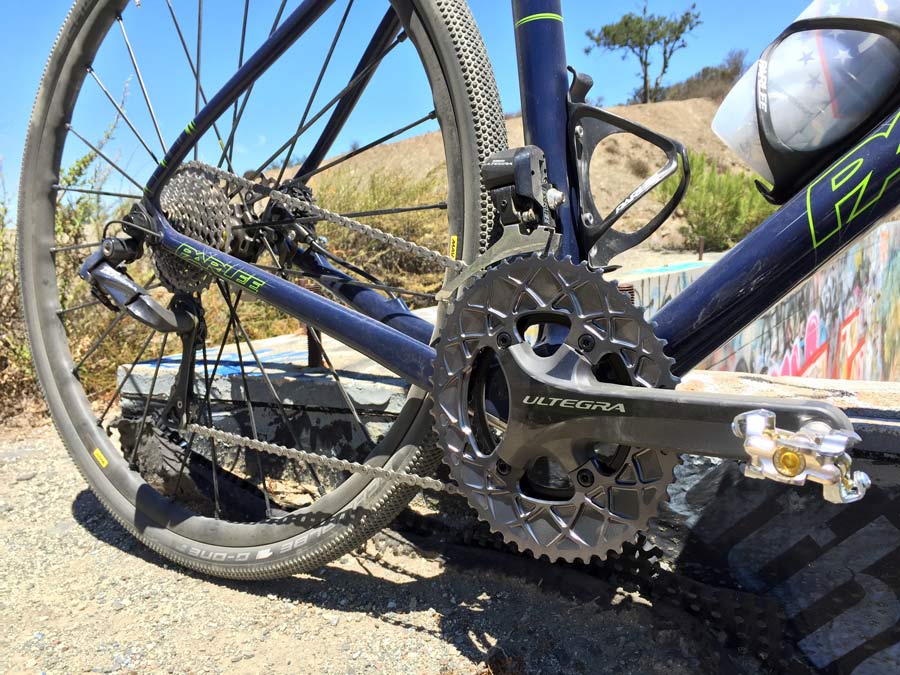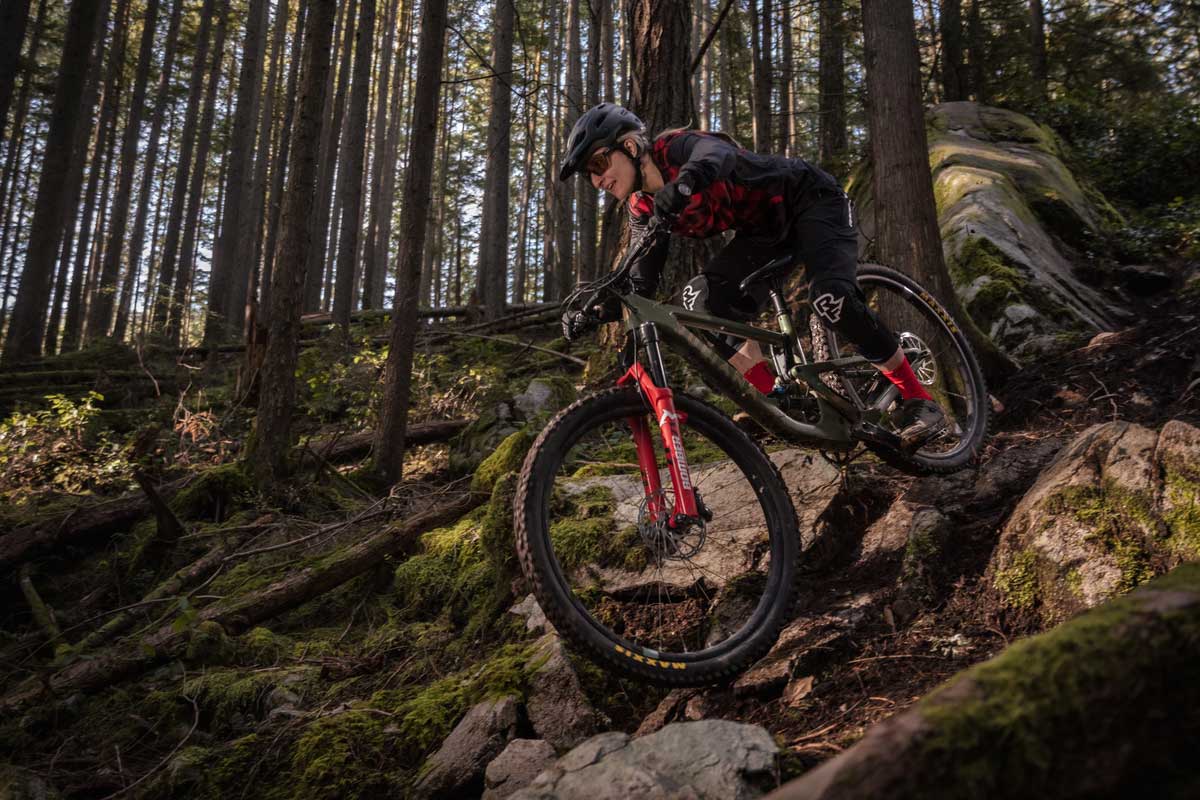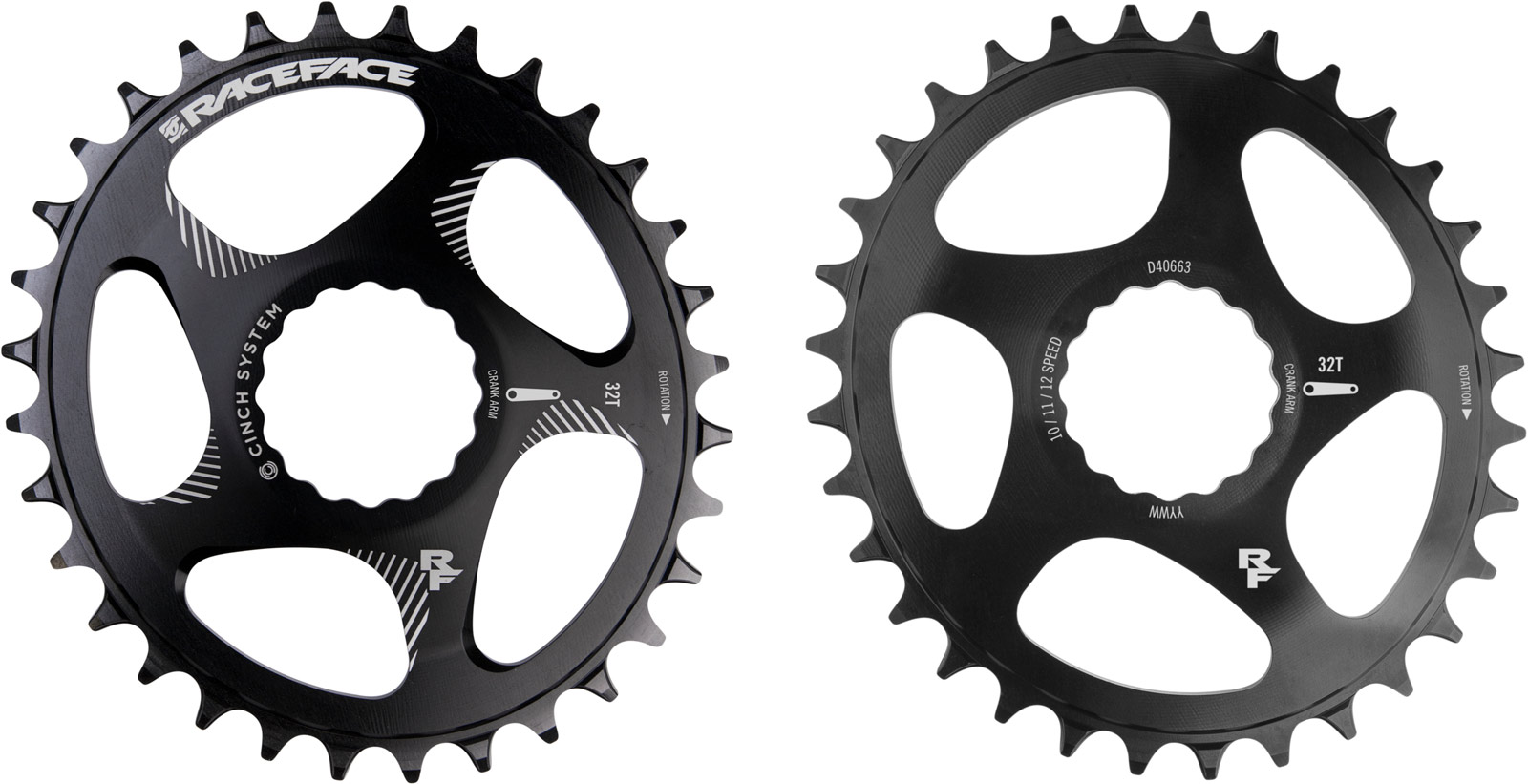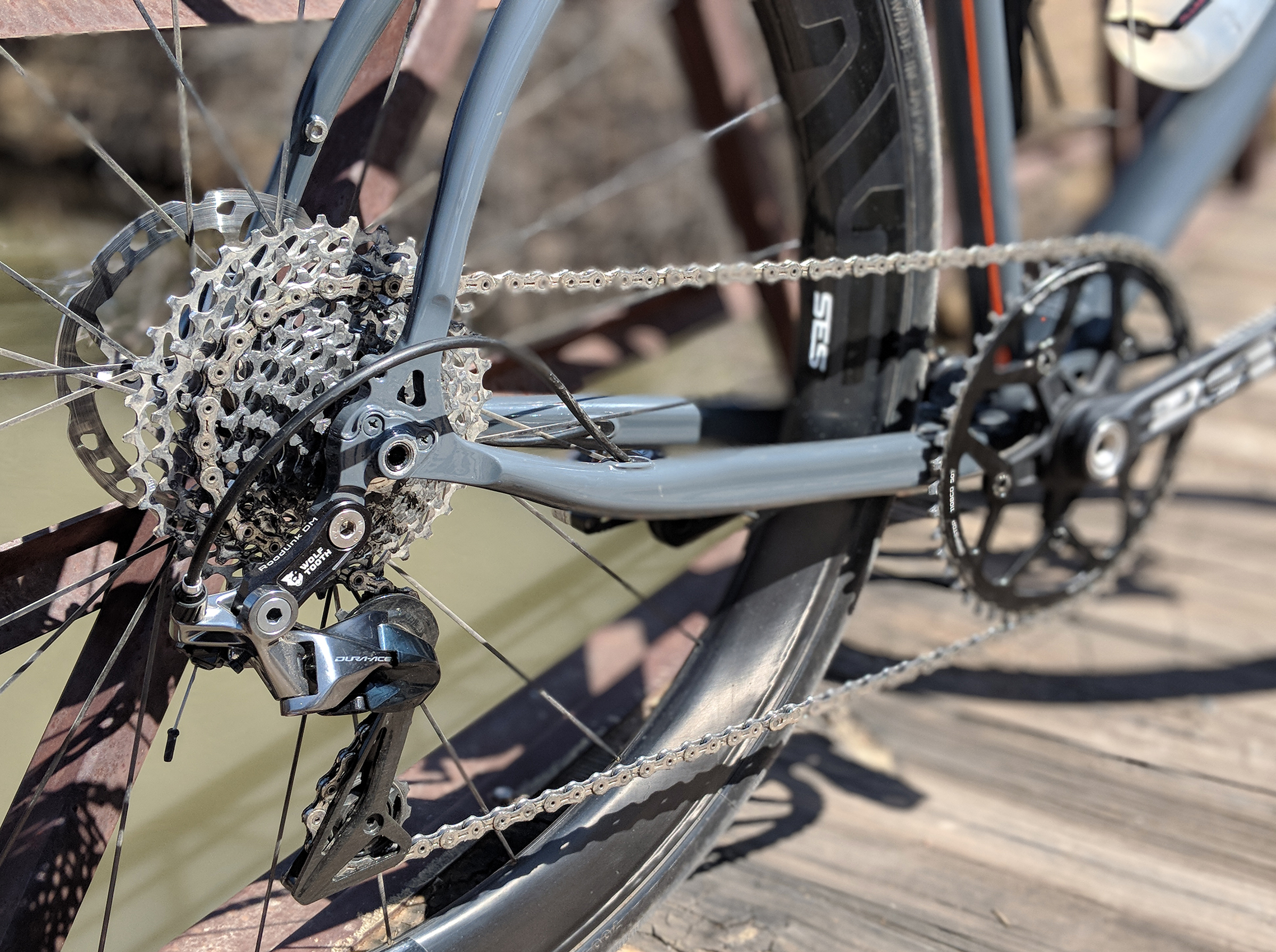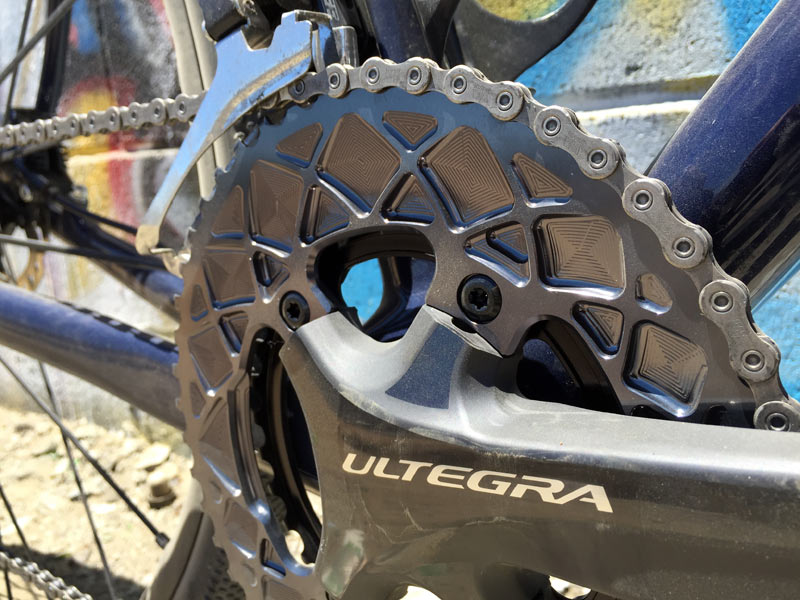We know, there’s no such thing as a stupid question. But there are some questions you might not want to ask your local shop or riding buddies. AASQ is our weekly series where we get to the bottom of your questions – serious or otherwise. Hit the link at the bottom of the post to submit your own question.
This week, the good folks from Race Face, absoluteBLACK and Wolf Tooth Components are on hand to answer your questions on all things oval chainring. How oval is too oval? Does an oval chainring expedite wear on other components of your drivetrain? These questions and more are answered by the following:
- Technical Department at absoluteBLACK
- Doug Chalmers, Design Engineer at Race Face
- Kurt Stafki, Marketing Manager at Wolf Tooth Components
- Lori Barrett, Managing Director at Rotor Bike
What’s the advantage of a double-cam/twin-cam chainring over a regular oval chainring?
Editor’s Note: We did contact the folks at Cruel Components and Osymetric for comment on this but they weren’t available to provide a response at this time.
Wolf Tooth Components: Going to a more complex shape allows for further adjusting of the torque required based on the crank arm position, but this will lead to noticeable and unnatural transitions through the pedal stroke. While this may work fine in controlled environments (like trainers or a flat time trial), you don’t want abrupt changes when dealing with mixed surface riding – gravel, adventure, MTB, and most roads.
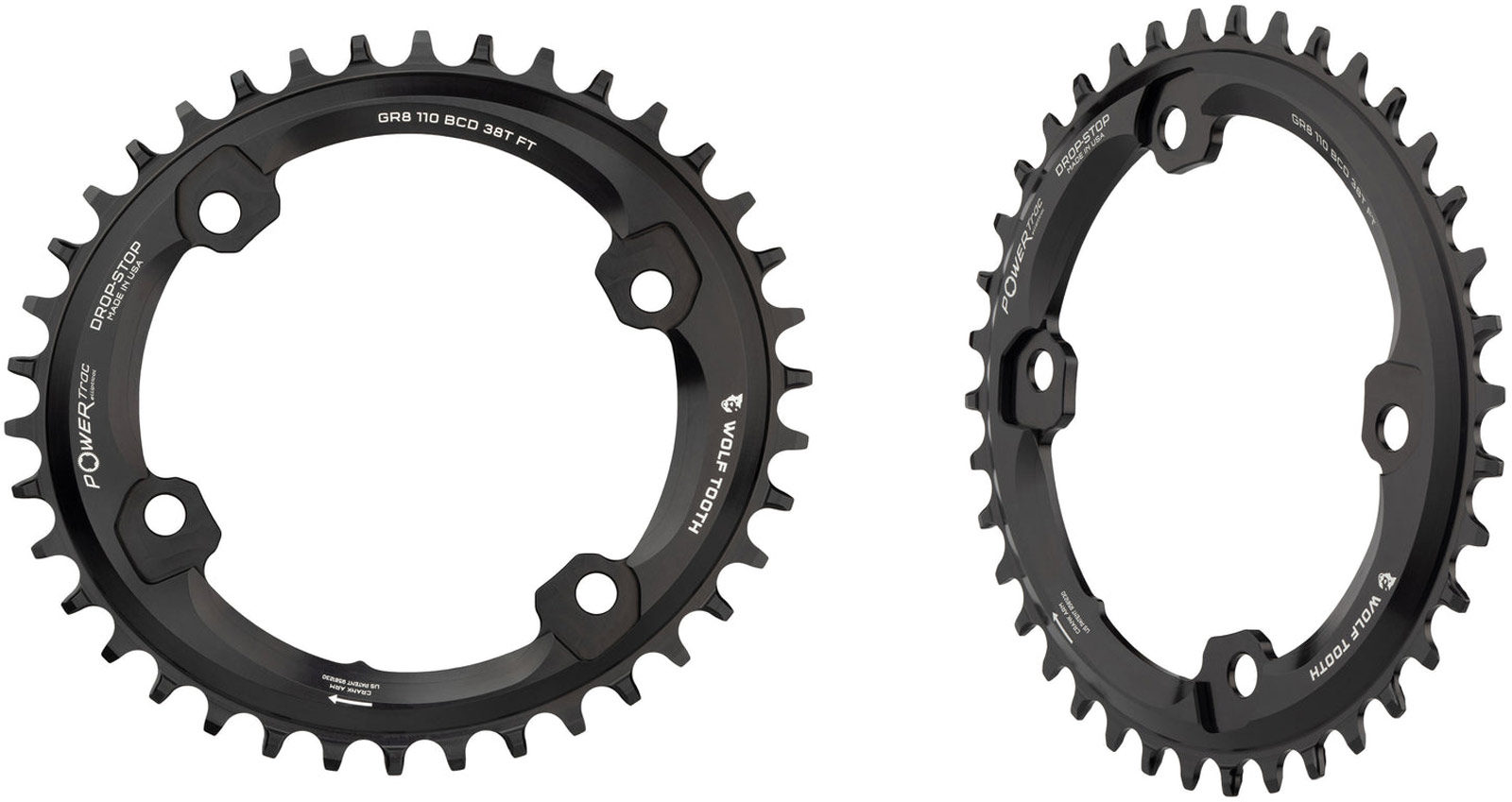
Also, to be clear, the mathematical shape used to define oval rings is actually an ellipse, which is why Wolf Tooth chainrings of this shape are called PowerTrac Elliptical chainrings. To nerd out a bit, all ellipses, which are defined as a curve on plane having two symmetric axes, are oval. An oval is defined as a shape that can have one or two symmetric axes. So, all ellipses are ovals, but not all ovals are ellipses.
Race Face: Oval chainrings work by changing the leverage on the chain through the crank stroke. The rider gets a more consistent force at the pedal through the whole pedal stroke. This means they can apply more force in the optimal power zone and less in the dead spots on the pedal stroke, reducing rider fatigue and helping to maintain traction on technical terrain by pedaling smoothly.
Race Face field testing has shown that slightly elliptical style oval rings are the sweet spot for most riders who want to try non-round rings. This relatively slight change in shape doesn’t result in having to learn to pedal all over again and typically results in improved traction and reduced fatigue without feeling odd when spinning fast on smoother trails at higher speeds.
There are specific advantages/disadvantages to more complicated variations of non-round chainring designs but there are technical challenges of meshing the chain to complex shapes as well as mitigating premature wear at sharper transitions on the ring perimeter. If they’re not overcome, there’s a higher potential for chain drop and short ring life. Low aspect ovals are similar to round rings in these respects.
absoluteBLACK: We can’t find any advantage. As a matter of a fact, it is rather the opposite. We have measured over one thousand cyclists in our laboratory (over time) with our state-of-the-art equipment ranging from amateurs up to the Winner of the Tour the France to study bio-mechanical movement. The shape of our oval chainrings comes from the scientific measurements and optimization rather than the “design” preference.
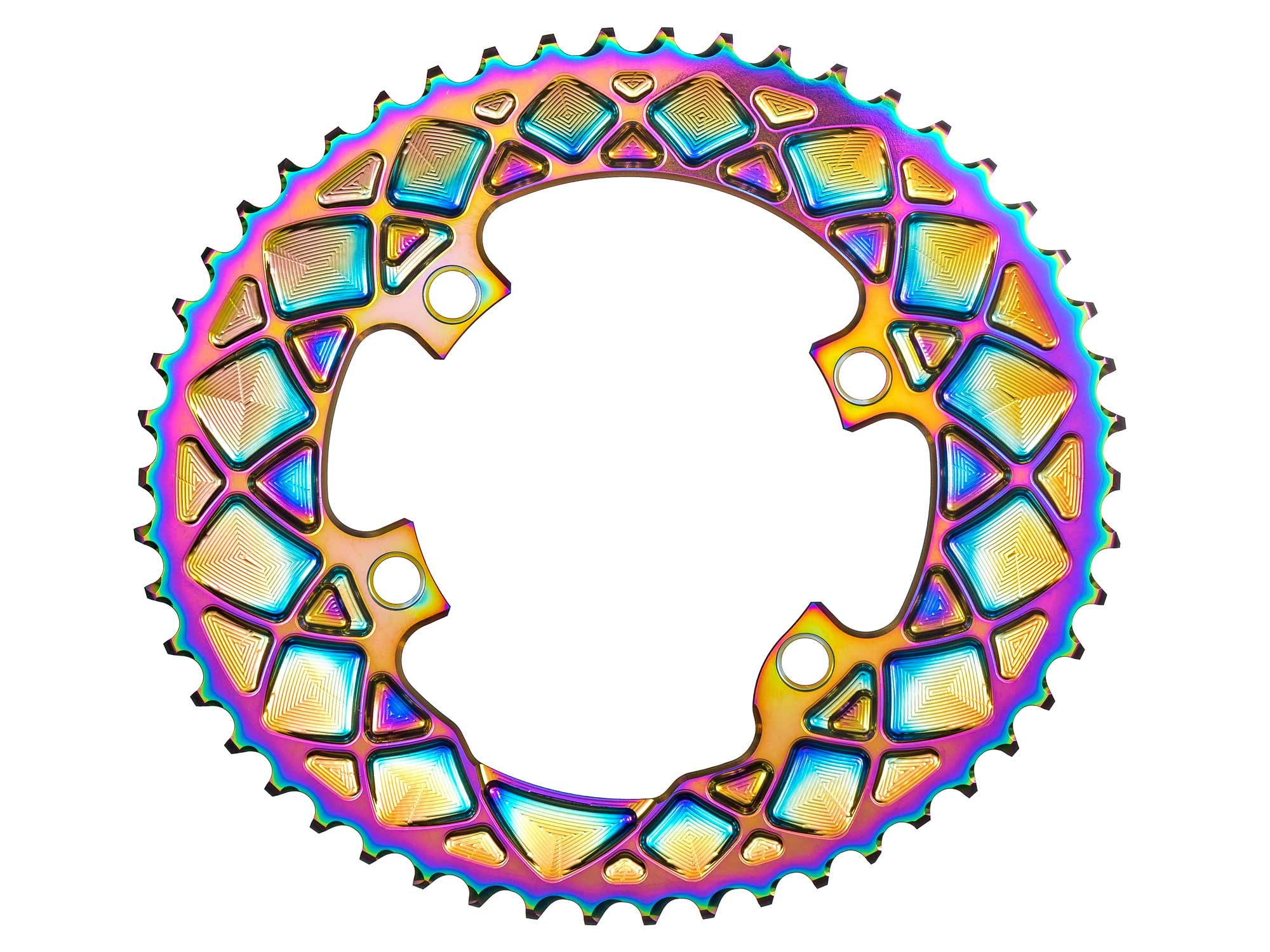
The shape was determined based on the output cyclists give to the pedals which differs between riding styles (e.g. MTB, road, TT) hence our MTB chainrings differ slightly in shape and timing compared to our road version. All of this requires a lot of bio-mechanical knowledge and a very unique tool to record 3-dimensional forces and torques at the pedals. In our Laboratory in Slovenia we have a bio-mechanical scientist and proprietary state-of-the-art equipment to do just that. More information can be found on our page under “science” tab.
Rotor: First, let’s clear up the difference between an oval ring, like the ROTOR Q Rings, and a double cam chainring: an oval ring has a single percentage curve (ovality) for the whole ring, where a double-cam chainring has a percentage ovality on either end with a connection in the middle that is lacking a matching curve.
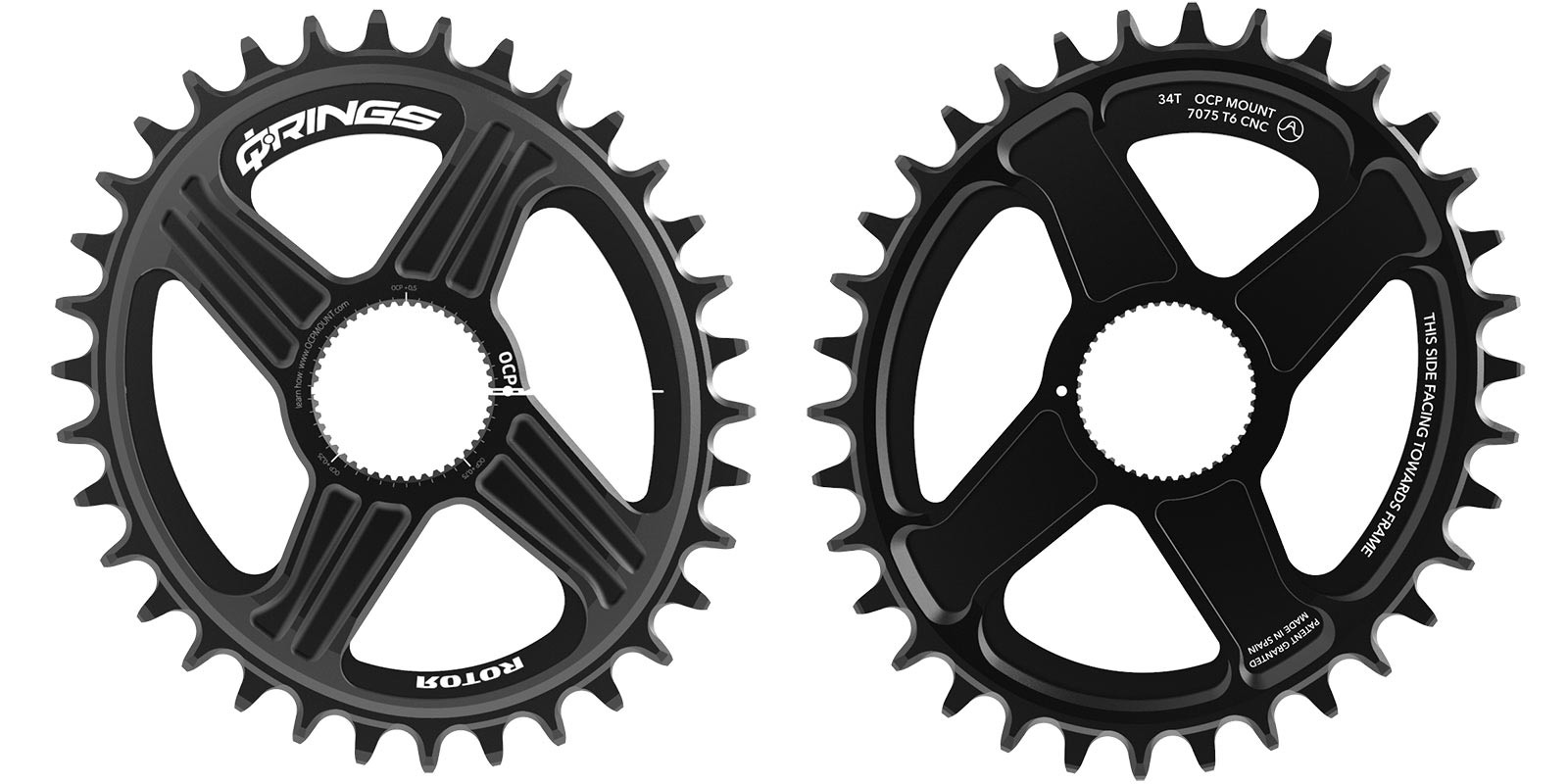
Since the majority of studies show a greater benefit to oval Q Rings, ROTOR doubled down on this technology with our Optimal Chainring Position (OCP) system. This is a patented technology allowing riders to position the oval ring in accordance with their point of maximum power in the pedal stroke. With the ability to adjust the position of the oval, the rider is able to take full advantage of the reduction of drag in the pedal stroke’s dead spot and fully capture the additional leverage provided by the extended part of the oval.
Do oval chainrings put undue pressure on a derailleur clutch, thus leading to expedited wear?
absoluteBLACK: Well-designed oval chainrings have the same pull of the chain at every stage of the crank revolution. Our oval shape is a geometrical ellipse which means that no matter how you cut it through the middle it always produces 2 equal parts.
In real life however, there are some manufacturing tolerances on the crank – chainring connection resulting in small variation. This variation, however, is well within the engineered “play” of the clutch. We have been selling our oval chainrings for over 9 years now and still haven’t heard of a single clutch being worn out because of them. This is simply an unsubstantiated myth that is circulating on the internet since the clutch mechanisms entered the market and has been repeated ever since.
Wolf Tooth Components: This is a good question, but oval chainrings do not lead to expedited wear on a derailleur clutch. The beating that the clutch takes trying to control the chain over bumps far exceeds what a bit of cyclical movement does to it. There are some pretty great high-speed videos of suspension bottom-out that show how far the rear derailleur is whipped around–that is a worst-case, but imagine thousands of smaller impacts.
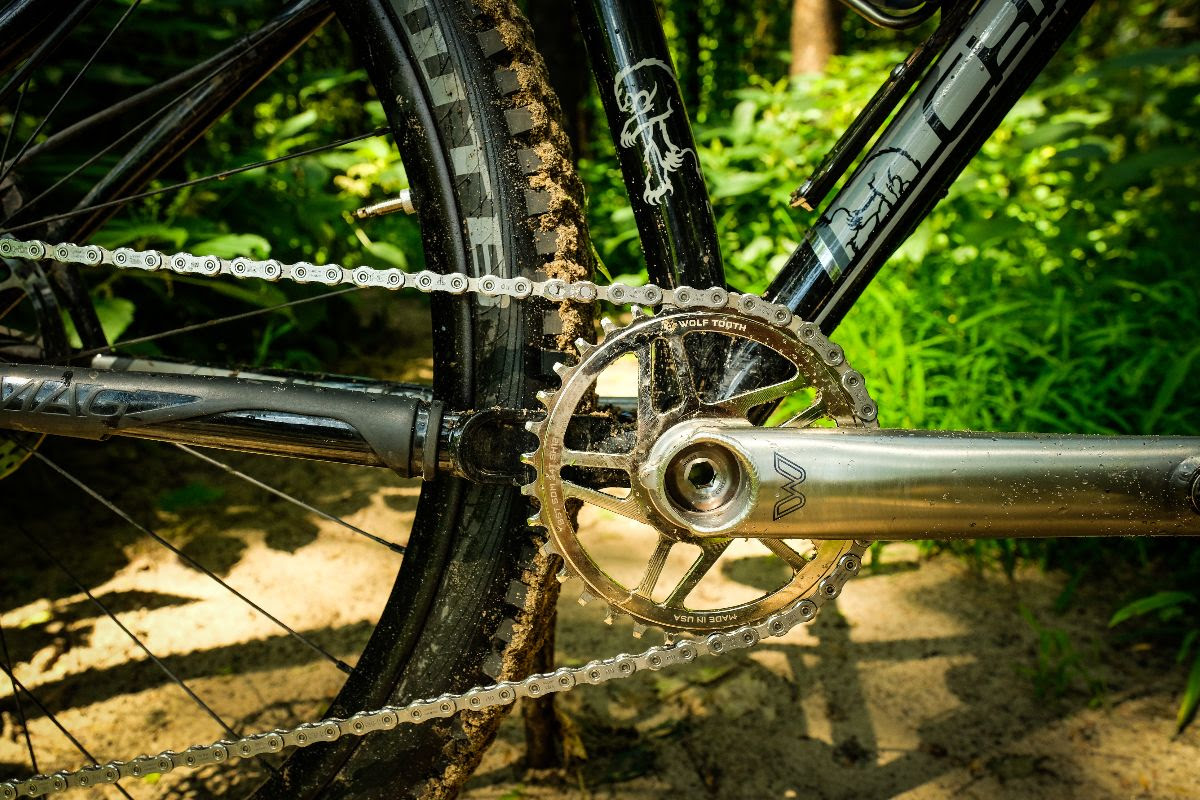
Rotor: While there can be a slight amount of movement in the derailleur cage with an oval ring, there is more movement demanded by variety of inherent bike movements, such as shifting on a standard round ring setup, a full-suspension bike moving through its travel, or the vibration accorded a hardtail or rigid bike passing over rough terrain. We have a number of customers who love riding an oval ring on a single speed cyclocross or mountain bike setup with no noticeable problems in chain tension.
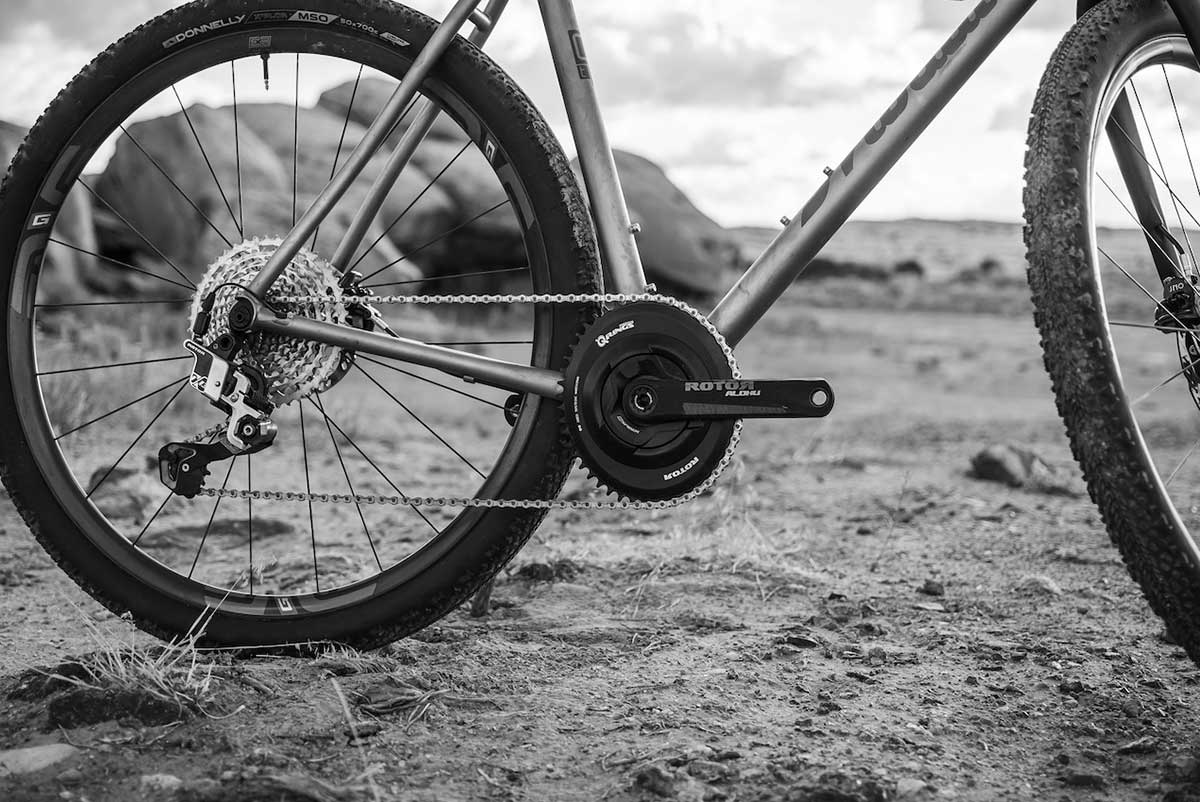
Race Face: Depends on how sensitive the clutch design is. Most have a slight amount of lash that allows for an oval. Ovals do not vary the chain length as much as is commonly thought. The number of teeth on the chainring always remains constant.
However, a result of having a ring with a changing radius is a very, very small change of the angle at which the chain leaves the cassette and arrives at the chainring (and the distance the chain is having to span). An angle change of this amount has a nearly negligible effect on the total length of the chain between these points and does not result in excessive clutch use. It might be unintuitive, but it is possible to run an Race Face elliptical oval ring on a single speed bike.
How oval is too oval?
Race Face: This is subjective, but we have found that around 10% ovality is a reasonable number for most users, e.g., a 32t ring with 10% ovality has a major radius of a theoretical 33.6t round ring and a minor radius of a 30.4t round ring, a 3.2t total radius change). However, some riders run highly specific rings with parabolic paths, perhaps due to asymmetric leg injuries etc. And, some folks just prefer good old round rings!
In addition to ovality, timing must also be considered – relative angle between the major axis of the oval ring and the crank arm. The correct timing will depend on BB drop, seat tube angle, reach, and if the bike has an idler or not. Between 110-115° typically works for a standard drivetrain on an MTB with current geometry. Almost all MTB oval rings are in this range. Gravel and road rings may be different due to the different riding positions, so the rider is pushing on the crank at a different angle relative to the ground.
Note: If you have an idler, you must rotate the oval forwards to match the angle of the chain arriving onto the ring, treat the idler as the “cassette.”
Rotor: The studies we have consulted indicate there is a “sweet spot” of ovality, currently adopted at 12.5%. The point of an oval ring is not that one feels the oval, but rather that the pedal stroke becomes smoother with no conscious effort from the rider. It’s worth noting that the original ROTOR Q Rings ovals were at 10% ovality, with an option for QXL at 16%. After more research showed that we could improve upon the positive impact for pedal stroke efficiency, we adjusted all ring production to the more effective oval percentage of 12.5% and discontinued the rings that provided less advantage.
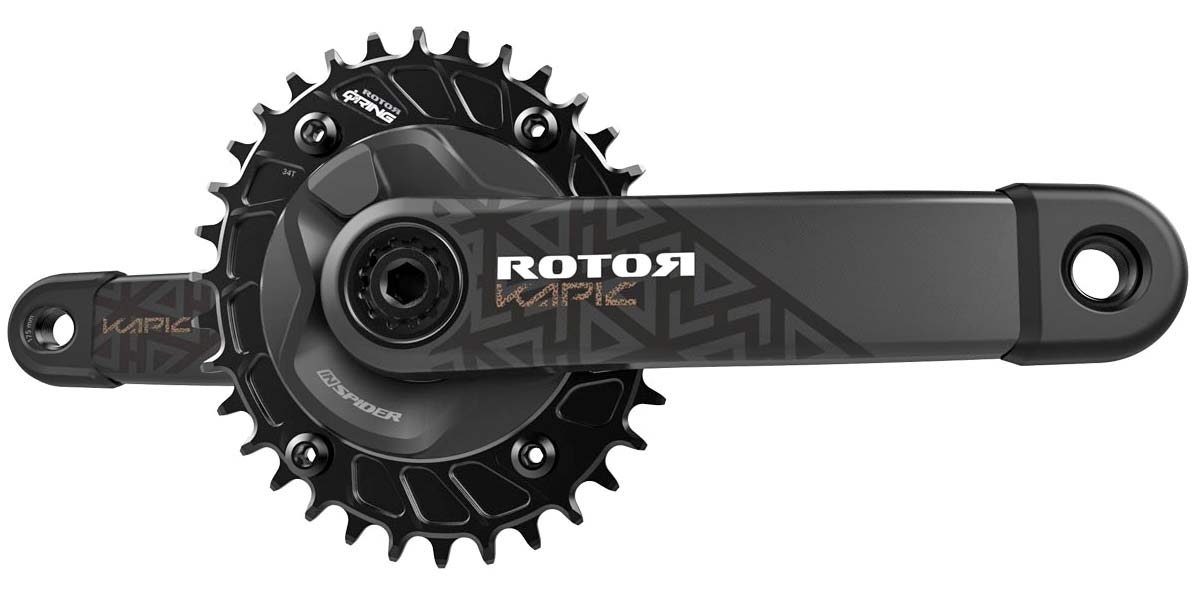
absoluteBLACK: There is no single answer that determines it because Ovality is a function of measurement and optimization per size and per intended use. It strongly relates to the first question. We performed over one thousand measurements and tested various ovalities throughout our development. We managed to determine the optimal ovality and timing based on objective scientific optimization.
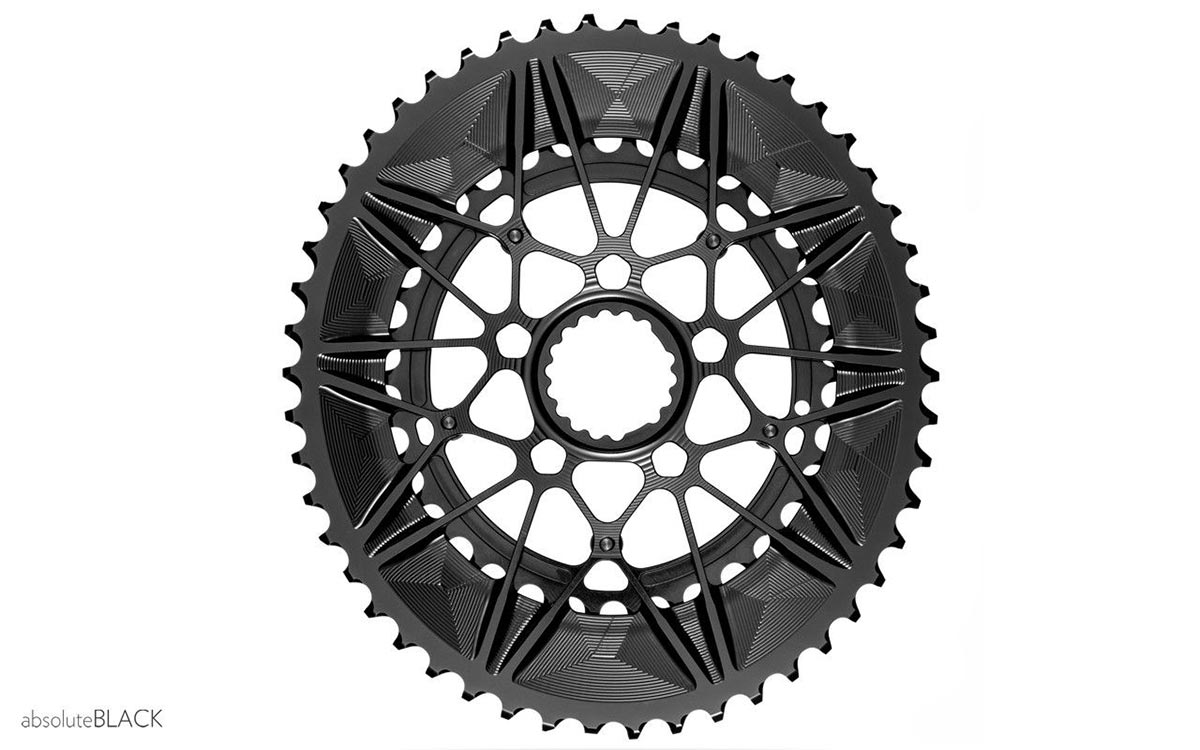
As a rule of thumb, it is usually too oval (or not oval enough) if a designer does not have any bio-mechanical data from cyclists to base their knowledge on. There is also a second aspect that is just as important as the amount of ovality but sadly is often neglected. It’s the timing – when in the crank cycle the chainring has the biggest radius. You need to get those two aspects right in order to make a great oval chainring.
Wolf Tooth Components: The fundamental idea behind oval chainrings is to translate human biomechanics into power for pedaling a bike. An oval chainring shape syncs natural movements with crank arm positions for efficient pedaling. When the crank arms are near vertical, you have less leverage and therefore you can’t transmit as much power to the pedals. An oval chainring provides more mechanical advantage in that portion of the pedal stroke, e.g., like having a chainring that is two teeth smaller.
Conversely, when the crank arms are near horizontal, you have more leverage and can transmit more power to the pedals. Based on those positions, you’d want a smaller chainring for when you have less leverage in the vertical crank arm position and a larger chainring when you have more leverage in the horizontal chainring position.
Our oval chainrings use a 10% ovality. With this shape, a Wolf Tooth PowerTrac Elliptical 34T chainring behaves like a 32T when crank arms are vertical and a 36T when crank arms are horizontal. This 10% ovality also offers optimized advantages of oval with the main ones being better traction and acceleration form a more even torque profile.
Am I more likely to snap a chain under high torque with an oval chainring as opposed to a round one? As the chain is cycled and, thus, the top chain line is pushed up and down relative to the ground, the amount of chain wrap around the cassette varies throughout the pedal stroke. Can this put more stress on the chain links?
Rotor: Short answer: there is no additional strain on a chain from using an oval ring. One of the metrics of increased performance on an oval Q Ring is improved pedal smoothness, which leads to more consistent and even application of power across the whole drivetrain, including the chain. Something that may be of interest in this vein; ROTOR power meters come with a free INpower software that allows riders to visually see their pedal stroke efficiency. It quantifies the smoothing of power output offered by a Q Ring.
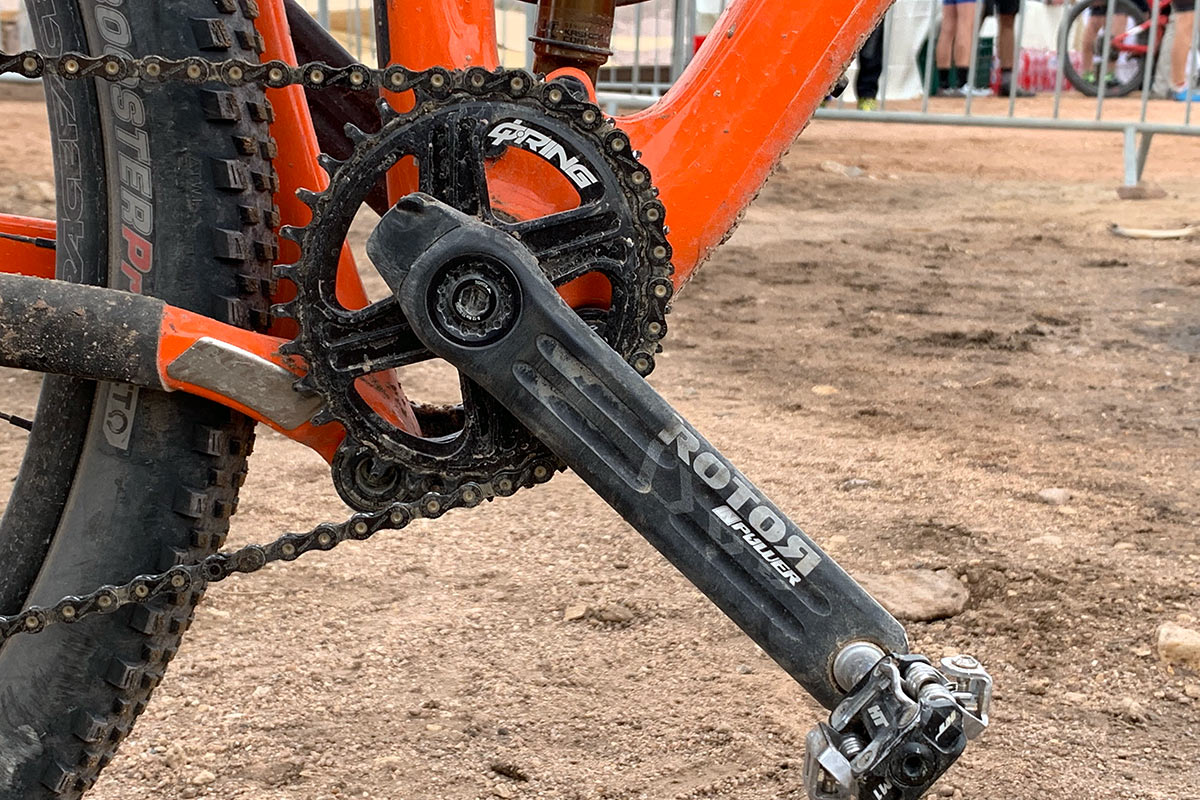
Wolf Tooth Components: An oval chainring will not add any stress to the chain links beyond that of a round chainring. If anything, the chain will be stressed less with more even torque applied at the cranks (and thus more even pull force on the chain). When talking about the cassette, much like the clutch explanation, that chain is bouncing around already so the exact tooth engagement is dynamic from riding. Any additional movement of the chain from ovality as it comes off the top of the cassette is negligible.
absoluteBLACK: The amount of chain wrap does not vary on the cassette nor on the chainring in any meaningful way (comparing round vs oval). The angle of the chain leaving the cassette varies less than 2° – this is a negligible difference, meaning there is no correlation between the shape of the chainring and the likelihood of snapping the chain.
Regardless of the chainring shape, chains may snap in general if the quick link/pin was wrongly installed. But the most common cause is actually shifting under the full load. When a chain changes gears on the cassette under load, chain plates are pulled from an angle while being hooked only on 1-3 teeth, and this may lead to decoupling of the outer plate from the pin. So, the best way to avoid potential chain failures is simply to avoid shifting under load. During gear shifts just reduce the load on the crank for one full pedal revolution.
Race Face: No. Race Face oval rings only increase the mechanical advantage of the rider in the portion of the pedal stroke where they are weakest, sometimes described as the “dead spot,” when the rider’s feet are at the top and bottom of their stroke. Using an oval chainring will typically result in more consistent chain tension through the pedal stroke compared to a round ring, due to the balancing effect of the ring leverage varying inversely with the rider’s power stroke position.
In answer to the question on chain-wrap, a change in chain-wrap of this small amount does not result in a notable change in the stress the chain links experience. The key is to have smooth transitions between each link, and a standard oval is one of the most efficient ways to do this on a non-round ring.
Got a question of your own? Click here to use the Ask A Stupid Question form to submit questions on any cycling-related topic of your choice, and we’ll get the experts to answer them for you!

